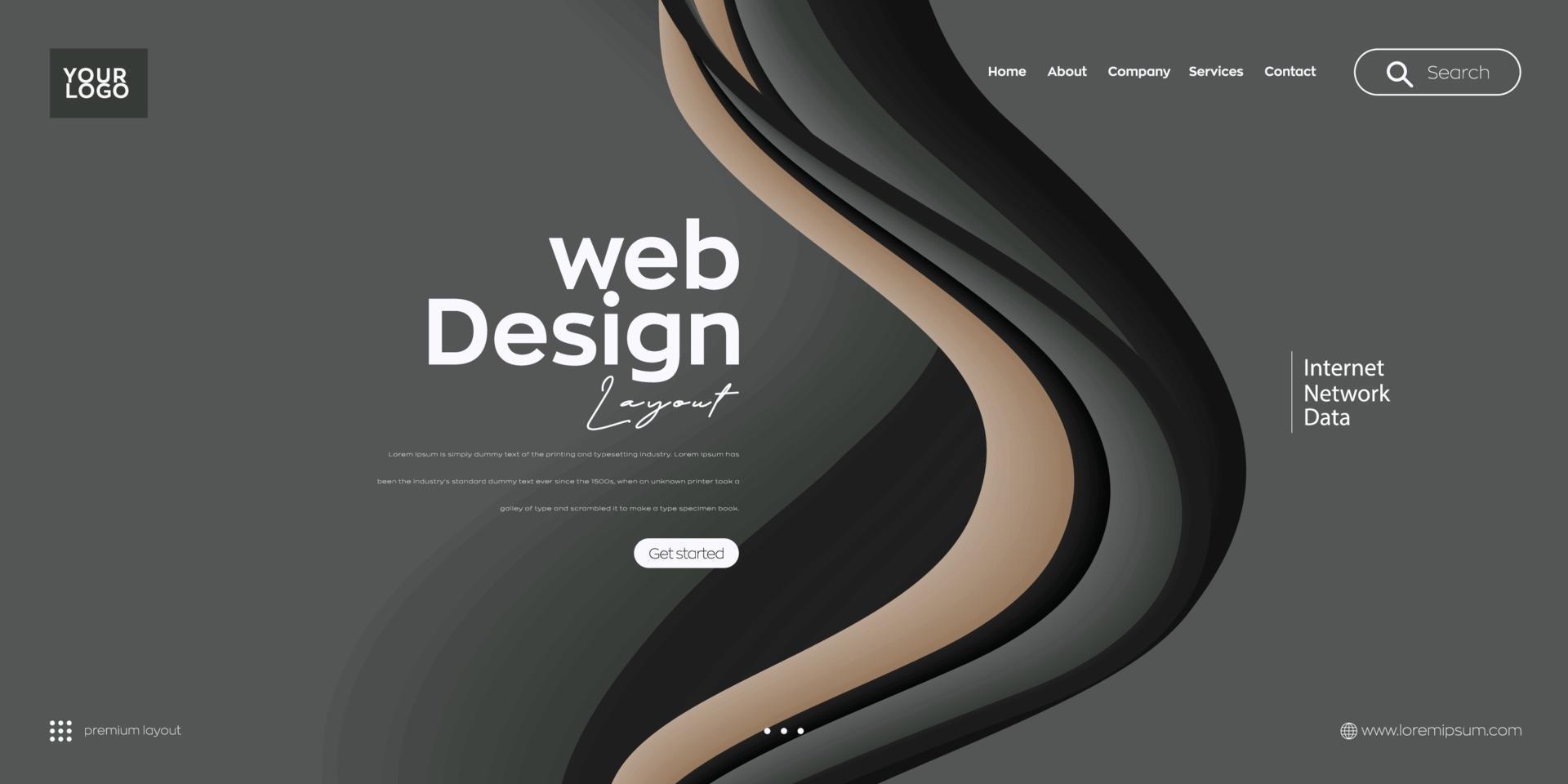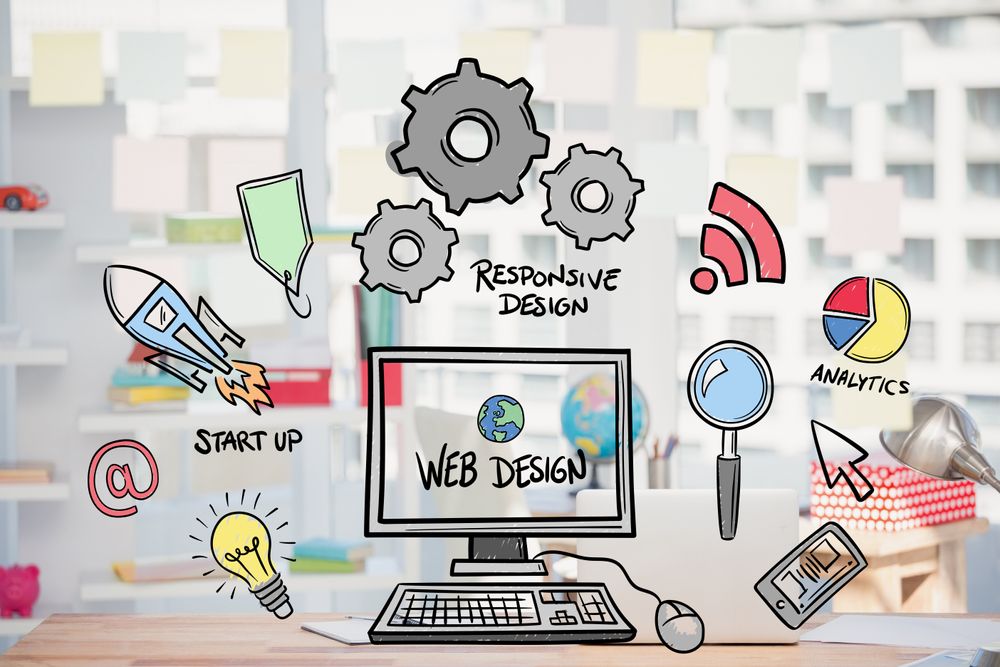The Crucial Elements of Efficient Internet Design: A Comprehensive Overview
Reliable website design incorporates different critical components that considerably effect customer experience. It demands mindful consideration of aspects such as mobile responsiveness, user-friendly navigating, and aesthetic pecking order. Each part plays a necessary duty in crafting a site that not only brings in visitors however also maintains them. Comprehending these foundational facets is essential for organizations aiming to boost their on the internet existence. Yet, what really distinguishes a successful website from its rivals?
Understanding Individual Experience (UX) Design
Individual experience (UX) Design works as the backbone of effective web Design, concentrating on how individuals engage with a web site. It incorporates different elements, consisting of functionality, access, and general fulfillment. A successful UX Design begins with customer research study, determining the target market's behaviors and demands. Prototypes and wireframes are then developed to picture the internet site's structure and flow. Website Design Klerksdorp. Checking with genuine individuals supplies useful understandings, permitting developers to improve and improve the interface navigation. Visual Design components, such as typography and color pattern, enhance the overall visual while supporting capability. Eventually, efficient UX Design warranties that individuals can quickly complete their objectives, fostering engagement and loyalty. By focusing on customer experience, websites can attain greater conversion rates and a favorable reputation
Relevance of Mobile Responsiveness
As mobile devices progressively dominate web usage, guaranteeing mobile responsiveness has actually become crucial for effective internet Design. Web sites that are not enhanced for mobile can cause a poor customer experience, leading to greater bounce rates and shed opportunities. A mobile-responsive Design enables material to adapt perfectly to different screen dimensions, making sure that users can access info conveniently, regardless of the gadget they use. Furthermore, internet search engine focus on mobile-friendly internet sites in their positions, making responsiveness a vital variable for exposure and web traffic. With an expanding number of users accessing the web by means of tablet computers and smartphones, companies should purchase mobile responsiveness to boost individual interaction, improve brand assumption, and ultimately drive conversions. Efficient website design should prioritize mobile responsiveness to stay affordable in today's digital landscape.
Crafting User-friendly Navigation
Navigating works as the foundation of any kind of efficient website, guiding site visitors through content with convenience. An intuitive navigating structure boosts user experience by enabling users to discover details promptly and successfully. Clear labeling of food selection things is necessary; it ought to reflect the content precisely, avoiding lingo that might puzzle customers. Furthermore, a logical pecking order is crucial, allowing customers to recognize partnerships in between different sections. Consistency throughout pages aids enhance expectations, while breadcrumbs give context and a sense of instructions. Responsive navigation food selections that adapt to various gadgets even more enhance availability. Eventually, the goal is to produce a seamless trip for visitors, ensuring they can check out the website without frustration, causing an extra involved and pleased target market.
Using Visual Power Structure
Aesthetic power structure plays an important duty in website design by directing individuals' interest and improving their experience. Effective format strategies, in addition to thoughtful choices in shade and typography, can considerably affect just how info is viewed and refined. Comprehending these aspects is necessary for producing visually enticing and useful sites.
Relevance of Visual Hierarchy
Reliable web Design rests on the principle of visual power structure, which overviews customers with web content in a intuitive and rational way. This concept is crucial for improving individual experience, as it assists prioritize information and guides attention to vital aspects. By establishing a clear power structure, internet developers can assure that users conveniently identify essential messages, contacts us to activity, and navigation choices. A well-structured aesthetic hierarchy decreases cognitive load, permitting users to process details efficiently. Additionally, it cultivates involvement by creating an enticing design that invites exploration. Inevitably, recognizing the significance of aesthetic power structure is essential for any type of internet developer intending to produce effective and straightforward internet sites that successfully interact their intended messages.

Methods for Effective Format
A well-organized layout functions as the backbone of any kind of successful website design, enabling individuals to effortlessly browse through web content. Efficient strategies include grid systems, which offer a structured framework for aligning components, guaranteeing consistency and balance. Furthermore, utilizing whitespace tactically can improve concentrate on key locations, decreasing visual mess and assisting customer focus. Prioritizing web content via size and placement better stresses important information, while contrasting aspects can develop a clear aesthetic hierarchy. Applying receptive Design techniques assurances designs adapt flawlessly throughout devices, maintaining usability. Ultimately, integrating user-friendly navigation aids, such as switches and menus, improves customer experience, making it much easier for visitors to locate relevant info rapidly. Together, these methods create the foundation of a reliable internet design.
Shade and Typography Choices
While color and typography choices may look like simple Design elements, they play a necessary function in establishing visual hierarchy on a web site (Seo Company Klerksdorp). Shade can direct users' interest, differentiate areas, and share brand name identity. By purposefully utilizing contrasting shades, developers can highlight crucial phone call to action, guaranteeing they stand out. Typography, on the other hand, influences readability and customer engagement. A well-chosen typeface can convey tone and individuality, while varying font dimensions and weights can create a clear framework. For example, bigger, bolder headings attract attention, while smaller sized body text provides in-depth details. Together, efficient shade and typography options create a cohesive aesthetic experience, leading users via the web content effortlessly and enhancing general functionality
Selecting the Right Shade Plan
Just how does one select the perfect color resource scheme for a web site? Selecting the appropriate shade system is vital for enhancing individual experience and sharing the brand name's message. Designers ought to begin by taking into consideration the target market and the feelings that various shades evoke. For example, blue often signifies trust, while red can develop urgency. It is necessary to limit the scheme to a few complementary shades to maintain visual consistency and stay clear of overwhelming users. Utilizing tools like color wheel applications can aid in picking colors that function well with each other. Additionally, developers have to ensure that there is sufficient contrast in between message and history colors for readability. Eventually, a well-thought-out color plan can significantly impact a web site's performance and customer involvement.
Incorporating Engaging Web Content

Involving material is necessary for capturing and retaining the focus of web site visitors. It functions as a bridge in between the website's Design and the customer's experience, fostering much deeper links. Reliable material usually consists of a mix of insightful articles, captivating visuals, and interactive aspects that motivate user engagement. By using storytelling methods, internet sites can evoke emotions, making the product much more unforgettable and relatable. Furthermore, integrating user-generated material, such as testimonials or testimonies, improves reputation and builds trust fund with the audience. Clear calls-to-action overview users towards wanted results, ensuring they remain engaged. Overall, a strategic technique to material development not just boosts individual experience but likewise drives conversions, making it a crucial facet of effective website design.
Maximizing for Speed and Performance
Optimizing for rate and performance is important for boosting user experience on an internet site. Strategies such as picture compression, minifying CSS and JavaScript, and leveraging browser caching can greatly lower loading times - Seo Company Klerksdorp. These strategies not only boost performance but additionally contribute to much better internet search engine rankings
Image Compression Strategies

Minifying CSS and JavaScript
Although lots of web designers concentrate on picture optimization, minifying CSS and JavaScript is just as essential for boosting site speed and efficiency. Minification entails removing unneeded characters from code, such as whitespace, comments, and formatting, without impacting its performance. This procedure causes smaller sized data dimensions, which leads to much faster packing times and enhanced customer experience. By reducing the quantity of information transferred between the customer and the web server, minification helps decrease data transfer usage and improves overall site efficiency. Additionally, search engines favor much faster websites, which can enhance search positions. Executing devices and automated processes for minifying investigate this site these scripts can enhance web advancement and maintenance, guaranteeing that performance stays a concern throughout the lifecycle of an internet site.
Leveraging Web Browser Caching
Leveraging internet browser caching substantially enhances site rate and performance by saving frequently accessed sources in your area on an individual's tool. This technique decreases the need for repeated demands to the server, significantly minimizing filling times for returning site visitors. By utilizing HTTP headers, internet designers can define caching policies for various sources, such as images, scripts, and stylesheets. Properly implemented caching approaches allow individuals to experience faster web page loads, resulting in improved customer contentment and engagement. Additionally, search engines prefer internet sites with optimized efficiency, potentially enhancing search positions. Frequently evaluating and managing cache setups assures that customers obtain updated content while still taking advantage of the efficiency of cached resources. In final thought, efficient browser caching is an important component of maximizing internet efficiency.
Often Asked Concerns
Just how Do I Choose the Right Website Design Tools?

Selecting the ideal website design devices involves reviewing project needs, understanding user requirements, and assessing various software application features. Compatibility, ease of use, and neighborhood assistance are additionally essential factors to think about for reliable Design results.
What Prevail Website Design Blunders to Prevent?
Common internet Design mistakes to stay clear of consist of messy layouts, bad Learn More Here navigating, poor mobile responsiveness, sluggish packing times, and disregarding customer experience. Reliable styles prioritize simpleness, performance, and availability to involve users and boost fulfillment.
Just How Can I Determine My Internet site's Success?
To measure a site's success, one might evaluate metrics such as traffic, conversion rates, individual involvement, and bounce rates. Utilizing devices like Google Analytics can offer valuable insights for recurring optimization and renovation approaches.
What Function Does SEO Play in Website Design?
SEO substantially influences web Design by ensuring that websites are structured for search engine presence. This includes enhancing site rate, mobile responsiveness, and content quality, inevitably boosting user experience and driving natural website traffic.
Just how Typically Should I Update My Website Design?
The frequency of internet site Design updates depends on industry trends, customer responses, and technological improvements. Typically, a refresh every 2-3 years is recommended, guaranteeing the website stays relevant and straightened with existing requirements and user expectations.
Customer experience (UX) Design serves as the foundation of effective internet Design, concentrating on exactly how individuals interact with an internet site. With a growing number of customers accessing the net via tablets and mobile phones, organizations need to spend in mobile responsiveness to improve customer engagement, boost brand name assumption, and eventually drive conversions. An user-friendly navigating framework boosts individual experience by permitting individuals to locate info rapidly and successfully. Appropriately executed caching strategies allow individuals to experience faster web page lots, resulting in improved individual fulfillment and involvement. The regularity of site Design updates depends on market trends, user feedback, and technological improvements.